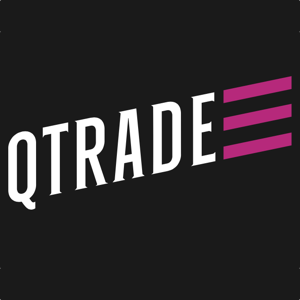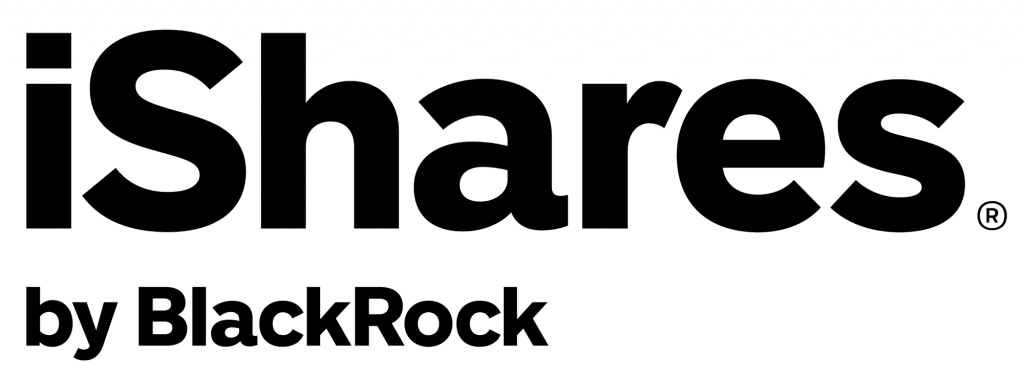If you are looking to invest in stocks outside of North America, it is extremely difficult to find high-quality information in order to pick foreign stocks.
When it comes to investments, Canada represents a small portion of the global GDP and only roughly three percent of the world’s capital markets.
Your best bet for investing in international stocks is to choose an international equity ETF with great features. I will cover the best international equity ETFs in Canada to consider choosing for your portfolio below.
Pros and Cons of International Equity ETFs
International equity ETFs, like all other investments, offer investors specific advantages and disadvantages.
- Diversifying your portfolio outside of Canada (and North America)
- Accessing potentially higher growth opportunities overseas
- Foreign currency fluctuations can negatively impact returns
- Political, economic, and social events can impact international companies
- International equity ETFs typically come with relatively higher fees
Although the broad US stock market has had stellar performance over the past decades and has been difficult to outperform, diversifying your risk outside of North America is a critical component of professional portfolio construction.
Investing In Developed And Emerging Markets
Both developed and emerging markets bring unique opportunities and risks to the table.
Developed Markets: These are countries with mature economies, like the USA, UK, Japan, and many in Western Europe.
- Pros:
- Stability: Their political and economic systems are typically more stable.
- Dividends: Companies in developed markets often pay regular dividends, providing a steady income stream.
- Regulation: Strong regulatory oversight ensures transparency and reduces the chances of fraud or malpractice.
- Cons:
- Slower Growth: Mature companies in developed markets might not offer the same growth potential as their emerging market counterparts.
- Market Saturation: Many sectors in these markets are saturated, leading to fierce competition and reduced profitability.
Emerging Markets: Countries like India, Brazil, or South Africa are in earlier stages of industrial development and have higher growth potential.
- Pros:
- High Growth: Rapid industrialization and a burgeoning middle class can lead to impressive growth rates.
- Untapped Potential: Many sectors in emerging markets aren’t saturated, offering ample opportunities for businesses.
- Cons:
- Volatility: Political instability, economic challenges, and lesser regulatory oversight can lead to market volatility.
- Currency Risk: Investing in emerging markets exposes you to currency fluctuations, which can impact returns.
Striking the Balance: An optimal portfolio will have a mix of both. The stability and dividends from developed markets can provide a solid foundation, while the growth potential of emerging markets can supercharge returns. How much you allocate to each depends on your risk tolerance, investment horizon, and financial goals.
5 Best International Equity ETFs in Canada
The information for each international equity ETF below will be relevant only for the unhedged version of each.
- iShares Core MSCI EAFE IMI Index ETF (XEF.TO)
- Vanguard FTSE Developed All Cap Ex North America Index ETF (VIU.TO)
- TD International Equity Index ETF (TPE.TO)
- Mackenzie International Equity Index ETF (QDX.TO)
- AGFiQ International Equity ETF (QIE.TO)
Blackrock’s iShares low-cost ETF suite offers an excellent international equity ETF through XEF. XEF invests in over 1,500 stocks across regions such as Europe, Asia, and Australia.
The XEF ETF is currency unhedged, meaning that foreign currency fluctuations will impact your total returns. If you are looking to avoid foreign currency impacts, XFH is an identical ETF that hedges out both the negative and positive impact of currencies.
Geographically, the ETF currently has high allocations to Japan, the United Kingdom, France, and Switzerland. From a sector perspective, the ETF currently has a high allocation to financials, industrials, and healthcare.
The ETF has a fairly long performance track record and is a very large fund in terms of assets under management. The fund pays distributions on a semi-annual basis and offers investors a great distribution yield.
XEF has a very cheap management expense ratio when compared to other international equity ETFs.
The iShares XEF ETF (or XFH if you are looking to avoid the impact of currency) is an excellent international equity ETF to consider adding to your portfolio.
2. Vanguard FTSE Developed All Cap ex North America Index ETF

- Unhedged Ticker: VIU.TO
- Inception Date: December 1, 2015
- Assets under Management: $3.36 Billion
- Management Expense Ratio: 0.23%
- Management Style: Passive
- Risk Rating: Medium
- Distributions: Quarterly
- Distribution Yield: 2.85%
- Stock Price: $32.04
- YTD Return: 0.98%
A close second choice to XEF is Vanguard’s FTSE Developed All Cap ex North America Index ETF (VIU). VIU invests in companies of all market capitalizations in developed markets outside of Canada and the US.
The VIU ETF is not currency-hedged – foreign currency fluctuations will either positively or negatively impact your total investment returns. Vanguard does not currently offer an ETF in Canada that invests in international equities while also offering investors currency hedging.
VIU invests in an extremely high number of stocks (currently almost 4,000 different international stocks), actually making the fund likely over-diversified.
The VIU ETF has similar country weights to XEF, with high allocations to Japan, the United Kingdom, France, and Switzerland. The ETF has a high sector allocation to industrials, financials, consumer discretionary, and healthcare.
The ETF has a medium-length performance track record and is a massive fund in terms of assets under management. The fund pays distributions on a quarterly basis and offers investors a good distribution yield.
VIU is offered at a very inexpensive MER and is only marginally more expensive than XEF.
As an international equity ETF, Vanguard’s VIU fund has great overall features and is a great ETF to consider for investing outside of North America.
3. TD International Equity Index ETF
TD is a less-known investment manager in the low-cost ETF space, having launched a competitive suite of passive ETFs several years ago. The TD International Equity Index ETF invests in mid-cap and large-cap stocks of companies in Europe, Asia, and the Far East (excluding South Korea).
The fund passively tracks the Solactive GBS Developed Markets ex-North America Large & Mid Cap CAD Index. As a provider of low-cost ETFs, Solactive allows TPE to be offered at very low fees.
TD’s TPE ETF is highly concentrated in the financial services, consumer goods, and healthcare sectors. It currently holds just under 1,000 total underlying stock holdings.
TPE has a medium-length performance track record and is a very large ETF in terms of assets under management. The ETF is offered at an extremely competitive management expense ratio that is marginally lower than other low-cost ETF providers.
The ETF pays a great distribution yield to investors on a quarterly basis.
If you are looking for a very aggressively-priced Canadian ETF for investing in international equities, TD’s TPE ETF is a great choice.
4. Mackenzie International Equity Index ETF

- Unhedged Ticker: QDX.TO
- Inception Date: January 24, 2018
- Assets under Management: $635.5 Million
- Management Expense Ratio: 0.19%
- Management Style: Passive
- Risk Rating: Medium
- Distributions: Quarterly
- Distribution Yield: 2.86%
- Stock Price: $109.41
- YTD Return: 1.81%
Mackenzie Investments is a popular investment manager in Canada, mainly known for its active strategies. The Mackenzie International Equity Index ETF also invests in mid-cap and large-cap stocks of companies in Europe, Asia, and the Far East.
Like TPE, QDX passively tracks the Solactive GBS Developed Markets ex-North America Large & Mid Cap CAD Index. This allows QDX to be offered at a very competitive management expense ratio.
QDX is highly concentrated in the financials, industrials, and healthcare sectors. It currently holds just over 1,000 total underlying stock holdings.
QDX has a short performance track record and is a large ETF in terms of assets under management. The ETF is offered at an extremely competitive management expense ratio that is currently tied with TPE as the most inexpensive Canadian international equity ETF option.
The ETF pays a decent distribution yield to investors on a quarterly basis.
As another incredibly inexpensive Canadian ETF offering international equity exposure, QDX is an excellent option to consider for adding international stock exposure to your portfolio.
5. AGFiQ International Equity ETF

- Ticker: QIE.TO
- Inception Date: January 30, 2017
- Assets under Management: $48.69 Million
- Management Expense Ratio: 0.45%
- Management Style: Multi-Factor
- Risk Rating: Low-to-Medium
- Distributions: Annually
- Dividend Yield: 5.03%
- Stock Price: $30.01
- YTD Return: 1.36%
The last international equity ETF on my list is offered by AGF, a smaller investment manager here in Canada. The AGFiQ International Equity ETF invests in large-cap and mid-cap stocks of companies in Europe, Australasia, and the Far East.
Unlike the other international equity ETFs on my list, QIE follows a proprietary, multi-factor approach to investing. This helps to control the ETF’s risk and volatility, allowing for a slightly lower risk rating than peers (low-to-medium versus the usual medium risk).
AGF’s QIE ETF is much more concentrated than passively-managed international equity ETF peers in Canada. It currently holds approximately 135 underlying stock holdings.
QIE is highly concentrated in the financials, industrials, and healthcare sectors. Its top countries include Japan, the United Kingdom, Switzerland, and France.
The ETF has a short performance track record and is a small ETF in terms of assets under management. The ETF is offered at a relatively high management expense ratio, mainly due to the fact that the strategy is not passively managed but instead follows a multi-factor approach.
The ETF pays a decent distribution yield to investors on an annual basis.
If you are looking for a strategy that uses a rules-based approach to international equity investing, QIE is a good ETF to consider choosing for your portfolio.
Are International Equity ETFs Worth the Fees?
International equity ETFs are an excellent way to get overseas stock exposure through a one-ticket solution. In most cases, they are offered at relatively low management expense ratios.
An immense amount of time and information is needed to accurately trade and invest in hundreds (or in some cases thousands) of international stocks. By offering access to a diversified portfolio of international stocks, international equity ETFs are the best way to invest abroad.
With most Canadian investors having too large of an allocation to Canadian stocks, investing internationally is an excellent way to bring balance and additional diversification to your portfolio.
What is the difference between international ETFs and those that exclude North America?
International ETFs are designed to give investors exposure to a variety of global markets and can include countries from both developed and emerging markets. These ETFs might encompass stocks from all over the world, including North America (comprising mainly of the United States and Canada).
On the other hand, international ETFs that exclude North America specifically focus on equities outside the U.S. and Canada.
How to Buy the Best International Equity ETFs
The cheapest way to buy ETFs is from discount brokers. My top choices in Canada are:

- 105 commission-free ETFs to buy and sell
- Excellent customer service
- Top-notch market research tools
- Easy-to-use and stable platform

- Stock and ETF buys and sells have $0 trading fees
- Desktop and mobile trading
- Reputable fintech company
- Fractional shares available
To learn more, check out my full breakdown of the best trading platforms in Canada.
Conclusion
If you, like most investors, have little knowledge of how to invest in international stocks, international equity ETFs are extremely useful.
With passively-managed international equity strategies being offered at extremely low fees, the value offered by an international equity ETF is immense.
International stocks are just one subset of stocks to consider investing in. Make sure to read my guide outlining the best ETFs in Canada, which covers key ETFs across a wide range of asset classes.







